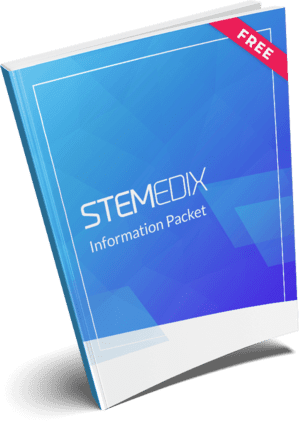Medical Review: Dr. Gerald Mastaw, MD – Board-Certified Physician
Last Updated: October 2025
What Is Degenerative Disc Disease?
Degenerative Disc Disease (DDD) occurs when the spinal discs, the soft, cushion-like pads between vertebrae, begin to lose hydration, elasticity, and height.
As discs deteriorate, they absorb less shock, which can lead to pain, stiffness, and nerve irritation if nearby nerves are compressed.
Common Symptoms
- Persistent or recurring neck or lower back pain
- Discomfort that worsens with bending, lifting, or prolonged sitting
- Stiffness after activity or upon waking
- Tingling, numbness, or weakness in arms or legs if nerves are affected
Age is the most common cause, but injury, repetitive strain, genetics, smoking, and excess body weight can accelerate disc wear.
Conventional Treatment Approaches
Most patients start with conservative therapy focused on relieving pain and improving mobility.
Common Treatments
- Physical therapy: improves flexibility, posture, and spinal support
- Anti-inflammatory medications or short-term muscle relaxants
- Heat, ice, or gentle stretching to ease discomfort
- Epidural steroid injections for nerve-related pain
For more advanced cases, procedures like radiofrequency ablation, spinal decompression, or surgery (e.g., disc replacement or spinal fusion) may be considered.
While these treatments reduce symptoms, they do not restore disc structure or reverse degeneration.
Regenerative Medicine for Disc Health
Regenerative medicine aims to engage the body’s natural healing processes rather than simply masking pain.
Among the most studied approaches are umbilical cord tissue-derived mesenchymal stem cells (UCT-MSCs) and platelet-rich plasma (PRP) therapy.
How Regenerative Therapies Work
- Stem cells release growth factors that can calm inflammation and support tissue regeneration.
- PRP concentrates the body’s own platelets and growth factors to stimulate repair directly at the injury site.
- Together, these methods may help reduce chronic pain, enhance mobility, and support long-term spinal function when paired with physical therapy and lifestyle adjustments.
Important:
Stem cell and PRP therapies for degenerative disc disease are still considered experimental and are not FDA-approved.
Ongoing clinical studies are assessing their safety, durability, and regenerative potential.
Recent Clinical Studies on Regenerative Treatments for Degenerative Disc Disease
2025 – Systematic Review of PRP for Discogenic Pain
Title: Stem Cells Therapy as a Treatment for Discogenic Low Back Pain: A Systematic Review
Journal: International Journal of Spine Surgery – Read Study
Summary:
A randomized controlled trial compared PRP releasate (growth factors from a patient’s blood) versus steroid injections for discogenic back pain.
Both groups improved initially, but PRP provided longer-lasting relief — with pain, disability, and quality-of-life improvements sustained for over 60 weeks.
No safety issues were reported, and the study concluded PRP is a safe and effective alternative for long-term pain control compared to steroids.
2023 – Umbilical Cord MSC Injections for DDD Pain
Title: Pain Relief After Allogeneic Stem Cell Disc Therapy
Journal: Pain Physician – PubMed
Summary:
Thirty-three patients with DDD received umbilical cord tissue-derived MSC injections (approximately 5 million cells per disc).
At 2 years, patients experienced a 6.5-point reduction in pain scores and 38-point improvement in disability scores, with over 90% rating their results as good or excellent.
No adverse reactions were observed. The study found MSC therapy significantly reduced chronic back pain and improved function.
2020 – Long-Term MSC Therapy Trial (36-Month Follow-Up)
Title: Allogeneic Mesenchymal Precursor Cells for Chronic Low Back Pain from DDD: A 36-Month Randomized Controlled Study
Journal: Stem Cell Research & Therapy – PubMed
Summary:
In this 100-patient trial, participants received a single intradiscal injection of mesenchymal precursor cells (6 or 18 million) or placebo.
At 3 years, MSC-treated patients maintained significant pain reduction and functional improvement compared to placebo.
MRI scans showed stable disc appearance with no serious immune or safety issues.
Researchers concluded intradiscal MSC therapy is a safe, durable, minimally invasive option for moderate DDD.
Could Regenerative Therapy Be Right for You?
You may be a candidate for regenerative therapy if you:
- Have chronic back or neck pain from degenerative discs that hasn’t improved with conservative care
- Prefer non-surgical approaches focused on repair rather than symptom masking
- Seek to preserve spinal function and reduce long-term pain
At Stemedix, we emphasize education, safety, and scientific transparency.
Our team offers personalized consultations to review your medical history, imaging, and goals to determine whether regenerative therapy could be an appropriate next step.
Medical Disclaimer
This page is for educational purposes only and does not constitute medical advice.
Stem cell and PRP therapies for degenerative disc disease are not FDA-approved, and individual outcomes may vary.
Always consult your physician or spine specialist before pursuing any treatment.
References
- Sato T. et al. Stem Cells Therapy as a Treatment for Discogenic Low Back Pain: A Systematic Review. Int. J. Spine Surg., 2025. Full Text
- Kim D. et al. Pain Relief After Allogeneic Stem Cell Disc Therapy. Pain Physician, 2023. PubMed
- Mesoblast Trial Group. Allogeneic Mesenchymal Precursor Cells for Chronic Low Back Pain from DDD. Stem Cell Res Ther., 2020. PubMed


 St. Petersburg, Florida
St. Petersburg, Florida
